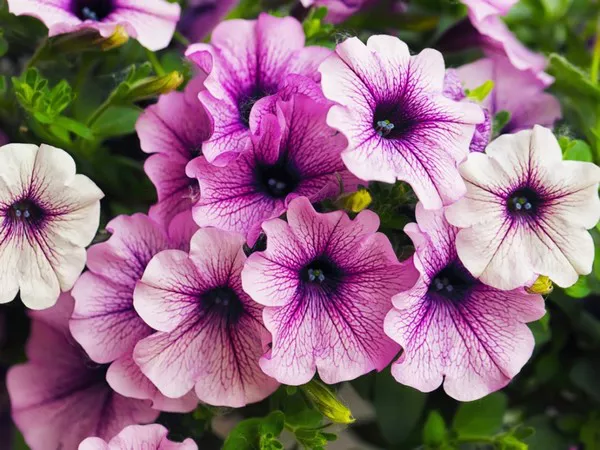Gardening and cultivating plants can be a rewarding and therapeutic experience, but it’s not without its challenges. One of the most common and frustrating challenges that gardeners face is dealing with pests in soil. Pests such as nematodes, fungus gnats, and root aphids can wreak havoc on plants and disrupt the carefully nurtured ecosystem of your garden.
Understanding Soil Pests
Before delving into methods to combat soil pests, it’s essential to understand the types of pests that can inhabit your soil. These pests can be broadly categorized into four groups:
Nematodes: These microscopic roundworms are common soil-dwelling pests that can cause severe damage to plant roots. They are particularly problematic in warmer climates and sandy soils.
Fungus Gnats: Fungus gnats are tiny, flying insects that lay their eggs in the soil. Their larvae feed on plant roots, making them a nuisance for gardeners.
Root Aphids: Root aphids are small, soft-bodied insects that infest the roots of plants, causing stunted growth and reduced plant vigor.
Soil-Borne Diseases: While not pests in the traditional sense, soil-borne diseases caused by fungi, bacteria, and other pathogens can harm plant roots and lead to wilting and death.
Now that we’ve identified these common soil pests, let’s explore how to combat them effectively.
Preventative Measures
Preventing soil pests from infesting your garden is often more manageable than dealing with an established infestation. Here are some proactive measures you can take to reduce the risk of pests in your soil:
Soil Sterilization: If you’re starting a new garden or using potting mix, consider sterilizing the soil before planting. This process involves heating the soil to kill off pests and pathogens. Be cautious not to overheat the soil, as it can adversely affect beneficial microorganisms.
Crop Rotation: Rotating your crops annually can help break the life cycles of soil-dwelling pests. By planting different types of crops in the same location each year, you can disrupt the pests’ access to their preferred host plants.
Companion Planting: Certain plants have natural pest-repelling properties. Consider interplanting marigolds, nasturtiums, or garlic with your susceptible crops to deter soil pests.
Healthy Soil: Maintaining healthy, well-balanced soil with good drainage can discourage soil pests. Healthy plants with strong root systems are more resilient to pests and diseases.
Natural Predators
Incorporating natural predators into your garden can be an effective biological control method to manage soil pests. Some beneficial organisms that prey on soil pests include:
Nematode-Parasitic Predators: Beneficial nematodes, such as Heterorhabditis and Steinernema, can be applied to the soil to control harmful nematode populations. These nematodes enter the bodies of their prey and release bacteria that kill the pest from the inside.
Predatory Insects: Certain insects like rove beetles and ground beetles are natural predators of soil-dwelling pests. Encouraging their presence in your garden can help control pest populations.
Nematode-Resistant Plants: Some plants are naturally resistant to nematodes, making them a valuable addition to your garden. For instance, marigolds produce chemicals that repel nematodes.
Chemical Solutions
In cases where preventative measures and natural predators may not be sufficient, chemical solutions can be considered. When using chemical treatments, it’s crucial to follow the instructions carefully, ensure safety, and minimize environmental impact. Here are some common chemical options:
Nematicides: Nematicides are chemicals specifically designed to control nematode infestations. They can be applied to the soil according to the manufacturer’s recommendations.
Insecticides: Insecticides may be used to combat soil pests like root aphids. It’s important to select an insecticide that is appropriate for your specific pest and follow the application instructions.
Fungicides: For soil-borne diseases, fungicides can help manage the issue. Choose a fungicide that targets the specific pathogen responsible for the disease.
Systemic Pesticides: Some pesticides, like neonicotinoids, can be absorbed by plants and provide protection against soil pests when applied as a soil drench or through foliar applications.
Cultural Practices
Cultural practices play a significant role in managing soil pests. These methods rely on altering the environment and conditions in your garden to deter pests. Here are some cultural practices to consider:
Adequate Watering: Overwatering can create conditions that favor the proliferation of pests like fungus gnats. Ensure that your soil is allowed to dry out between waterings.
Mulching: Mulching with materials like straw or wood chips can help deter soil pests and protect plant roots. Mulch can create a barrier between pests and the soil.
Proper Drainage: Ensure that your garden has good drainage to prevent waterlogged conditions that can attract soil pests.
Sanitation: Remove and dispose of infested plants or soil to prevent the spread of pests and diseases.
Organic Remedies
For gardeners looking for more eco-friendly and organic solutions, there are several remedies to control soil pests:
Neem Oil: Neem oil is a natural pesticide derived from the neem tree. It can help control a wide range of pests and is considered a safer alternative to synthetic chemicals.
Diatomaceous Earth: Diatomaceous earth is a natural, abrasive substance that can be sprinkled on the soil’s surface. It damages the exoskeleton of many pests, causing them to dehydrate and die.
Beneficial Nematodes: As mentioned earlier, beneficial nematodes are a natural and effective solution to control nematode populations.
Biological Inoculants: Inoculating your soil with beneficial microorganisms like mycorrhizal fungi can improve plant health and resistance to pests.
Trap Plants: Some plants are particularly attractive to certain pests. By placing these “trap” plants in your garden, you can divert pests away from your valuable crops.
Conclusion
Dealing with pests in soil can be a challenging aspect of gardening, but with the right strategies and a proactive approach, you can effectively manage and eliminate these unwanted intruders. From preventative measures and natural predators to chemical solutions, cultural practices, and organic remedies, there are multiple tools at your disposal.
Remember that every garden is unique, and the best approach may vary depending on your specific pest problem and the types of plants you are growing. By staying vigilant and implementing the appropriate methods, you can maintain a healthy and pest-free garden that thrives and flourishes.


